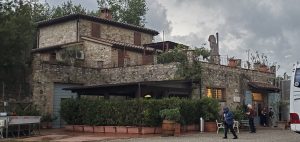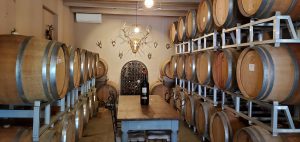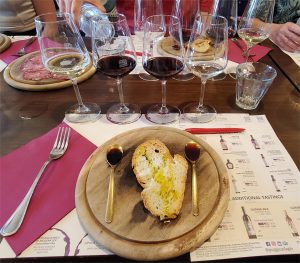Tuscans are very proud of their wines, and rightfully so. Made predominately from sangiovese grapes and traditionally available in a rotund bottle nestled inside a straw basket, it is the quintessential Italian wine. Serve it with aged meats, hard cheeses, pizza and pastas and you will be transported back to the rolling hills of Tuscany.
 In order to be known as Chianti wine it must be produced in Tuscany, and to be a Chianti Classico it must come from the Chianti region within Tuscany. There are different types of Chianti wines, usually distinguished by how long they are aged. It is also possible to blend the sangiovese with other grapes such as cabernet, merlot or syrah for a richer or more diverse flavour.
In order to be known as Chianti wine it must be produced in Tuscany, and to be a Chianti Classico it must come from the Chianti region within Tuscany. There are different types of Chianti wines, usually distinguished by how long they are aged. It is also possible to blend the sangiovese with other grapes such as cabernet, merlot or syrah for a richer or more diverse flavour.
According to the Food & Drink section of the online magazine The Manual, “To be considered Chianti Classico, a wine must come specifically from this region and adhere to a set of very high standards involving everything from growing practices to aging to the wine’s alcohol content.” The best way to distinguish a true bottle of Chianti Classico is by the black rooster emblem on the wine’s label. This symbol is a tremendously prestigious and important badge of honor for any bottle to which it is awarded.
wine must come specifically from this region and adhere to a set of very high standards involving everything from growing practices to aging to the wine’s alcohol content.” The best way to distinguish a true bottle of Chianti Classico is by the black rooster emblem on the wine’s label. This symbol is a tremendously prestigious and important badge of honor for any bottle to which it is awarded.
The pricing is also variable but we found that even a cheap bottle of Chianti was good, and the more expensive even better. In many of the restaurants we visited we would just order a bottle of their house Chianti with our meal. It was served with stemmed glasses and in the traditional basket-covered round bottles and never failed to be a good wine. It was also a good price and helped us to maintain our budget.

During our time in Florence we booked a half day Wine Tour. Two of our other full day tours to the hillside villages (more about those in a later article), included stops at wineries as well. Each stop included a tasting of three or more types of wines, and for those that produced it, olive oils and balsamic vinegar as well. The tastings were accompanied by bread, cured meats and local cheeses making it a complete experience.

Driving through the countryside and navigating the hills and valleys on our way to each winery was a big part of the adventure, and made me appreciate the drivers who skillfully navigated our trip. It was late September, the start of harvest, so the vines hung heavy with bunches of dark grapes. Most of the white grapes had already been harvested and hung to “dry in the wind” for six months before processing.
It seemed like every sloping hillside was lined with rows of vines, punctuated only by rows of olive trees. The picture you have in your mind of the sprawling Tuscan home perched atop a hill with its winding lane lined with cypress trees is very much the reality.
If you find yourself in Florence, or any other village in Tuscany, be sure to tour the local wineries and immerse yourself in the tradition of Chianti wines.

If I continue to read these articles, I’m going to want to travel back to Italy again. If I do, it will be for at least 3 months. Just so I can do what you have been doing. Thanks again for the wonderful articles.